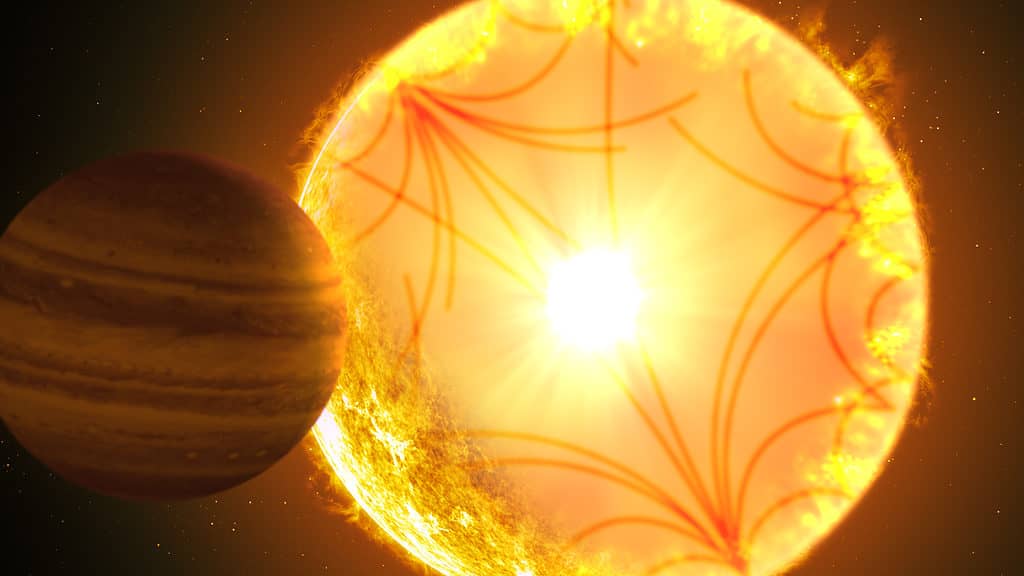
Kepler-1658b isn’t going to be having a great time in about three million years or so. The distant exoplanet is set to vanish into oblivion as it spirals closer and closer to its expanding star in a decaying orbit. Soon (on a cosmic timeline, anyway), the planet will collide with the star, marking its demise.
This is the first look at a system at this late stage of evolution, which gives us new information about the long, complicated process of planetary orbital decay. Rather ironically, Kepler-1658b is the first exoplanet discovered by the Kepler Space Telescope, launched in 2009.
“We’ve previously detected evidence for exoplanets inspiraling toward their stars, but we have never before seen such a planet around an evolved star,” says Shreyas Vissapragada, a 51 Pegasi b Fellow at the Center for Astrophysics | Harvard & Smithsonian and lead author of the study, published in The Astrophysical Journal Letters. “Theory predicts that evolved stars are very effective at sapping energy from their planets’ orbits, and now we can test those theories with observations.”
Kepler-1658b is a “hot Jupiter,” a term used to describe exoplanets with the same mass and size as Jupiter but are in scorchingly close orbits around their host stars. For Kepler-1658b, that distance is merely an eighth of the space between our Sun and its tightest orbiting planet, Mercury. Orbital decay appears inevitable for hot Jupiters and other planets like Kepler-1658b that are already very close to their stars. As it stands now, Kepler-1658b is 5.88 times Jupiter’s mass and takes 3.8 days to orbit its star.
Measuring the orbital decay of exoplanets has proven difficult due to the slow and gradual nature of the process. According to the new study, Kepler-1658b’s orbital period is decreasing at a microscopic rate of about 131 milliseconds per year, with a shorter orbit indicating the planet has moved closer to its star.
Detecting this decline required multiple years of careful observation. First, the Kepler telescope started the watch, which was then picked up by the Palomar Observatory’s Hale Telescope in Southern California, and finally by the Transiting Exoplanet Survey Telescope (TESS), which launched in 2018. All three instruments captured transits — when an exoplanet crosses the face of its star and causes a very slight dimming of the star’s brightness.
While planet-star collisions are certainly the fate of billions of stars, Kepler-1658b’s root cause is its tides. Tides are generated by gravitational interactions between two orbiting bodies, such as between our world and the Moon or Kepler-1658b and its star. The bodies’ gravities distort each other’s shapes, and as the bodies respond to these changes, energy is released.
“Now that we have evidence of inspiraling of a planet around an evolved star, we can really start to refine our models of tidal physics,” Vissapragada says. “The Kepler-1658 system can serve as a celestial laboratory in this way for years to come, and with any luck, there will soon be many more of these labs.”









